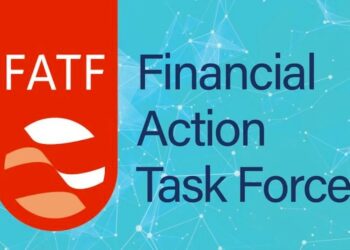Nigerian banks face a critical regulatory turning point as the Central Bank of Nigeria (CBN) winds down the pandemic-era forbearance regime and tightens supervisory expectations. In a major directive issued last month, the apex bank had ordered all banks to submit Capital Restoration Plans within 10 working days after the close of each quarter, beginning with June 30, 2025.
The circular, signed by CBN’s director of banking supervision, Dr. Olubukola Akinwunmi, outlined a set of stringent transitional measures aimed at returning banks to full compliance with prudential regulations. The measures follow the CBN’s decision to terminate all COVID-19-related regulatory waivers and support mechanisms granted over the past four years.
For banks, the immediate implication is the need to overhaul internal capital planning, asset quality management, and risk governance frameworks to meet the new regulatory bar. The capital restoration plan will require top management to lay out a clear roadmap for how they intend to fix any capital shortfalls, clean up bad loans, and maintain regulatory ratios going forward.
According to the circular, earlier restrictions placed on banks will remain in place until capital levels and provisioning are fully restored to regulatory compliance. In a bid to ensure that retained earnings are conserved for capital strengthening and systemic risk mitigation, it had directed that banks benefiting from transitional concessions temporarily suspend dividend payments, bonuses to directors and senior management, and investments in foreign subsidiaries.
On capital adequacy, the CBN’s directive mandated all affected banks to detail how they will restore capital adequacy, improve provisioning, and align credit exposures with prudential standards, with plans to review and monitor these plans closely.
“The plan should detail the management’s proposed strategies to restore full regulatory compliance, including (but not limited to) cost optimisation initiatives, risk asset reduction, significant risk transfers, and necessary business model adaptations.
“The plan must cover the entire period until full normalisation of capital and asset quality indicators are achieved. Plans submitted will be subject to regulatory review and approval, and will form the basis for continuous supervisory monitoring and engagement throughout the transition,” the circular stated.
For banks with elevated Non-Performing Loan (NPL) ratios or constrained capital buffers, the new rules could lead to tough decisions, including branch rationalisation, asset sales, staff restructuring, or even capital raises.
One of the most consequential changes for banks is the termination of forbearance on Single Obligor Limits (SOL), a relief that had allowed them to exceed regulatory thresholds in lending to large clients during the pandemic. With this waiver gone as of June 30, 2025, banks must bring their credit books in line with regulatory lending limits, or risk sanctions.
The circular stated that “Effective June 30, 2025, all COVID-19-related regulatory forbearance and waivers on Single Obligor Limits (SOL) shall be terminated. This step is aimed at restoring risk sensitivity in credit classification, provisioning, and asset quality assessments.
“Affected banks must align all impacted credit exposures with existing CBN Prudential Guidelines and other relevant regulations. To support asset quality clean-up, the requirement to retain fully provisioned loans for one year before write-off (Section 3.21, Prudential Guidelines 2020) is temporarily waived for forbearance related facilities (Please refer to our email of February 6, 2025 with the Subject; Regulatory Waiver on Write-Off of Forbearance Loans). Banks may proceed with write-offs to reduce their Non-Performing Loan (NPL) ratios, provided internal governance requirements for such write-offs are met.”
Additionally, while the CBN temporarily waived the one-year retention rule for fully provisioned loans, allowing faster NPL write-offs, the burden of provisioning and classification has now been reinstated in full. This means banks must absorb the financial impact of impaired loans promptly, without relying on deferred regulatory relief.
To support capital buffers during this transition, the CBN temporarily lifted caps on the recognition of Additional Tier 1 (AT1) instruments in the computation of Capital Adequacy Ratio (CAR). This is in effect from June 30, 2025, through March 31, 2026.
While this offers banks some breathing space, the CBN made it clear that this measure is not a substitute for the broader recapitalisation programme announced in March 2024. That programme still requires banks to raise their minimum capital bases substantially over the coming months.
Another major implication for banks is the restriction on using retained earnings during the transition. Banks benefitting from the CBN’s transitional reliefs are barred from paying dividends, awarding bonuses to directors and executives, or investing in foreign subsidiaries. This is expected to dampen shareholder expectations and may weigh on bank stock performance in the short term.
Until banks return to full regulatory compliance, these restrictions will remain in force, signalling a prioritisation of financial stability over profitability or expansion.
The new regime also places a heavier disclosure burden on banks. Effective June 30, 2025, all banks must submit quarterly reports that detail provisioning levels, reconciliations of affected credit exposures, capital adequacy calculations with and without reliefs, migration data for restructured loans, and comprehensive disclosures on all AT1 instruments.
These reports must be submitted to the director of banking supervision within 10 working days of the quarter’s end. For this quarter, banks had a short period to comply to tge directive that was issued on Jume 20, 2025 as they are expected to submit on or before July 14, 2025.
This enhanced disclosure requirement is aimed at increasing supervisory visibility into banks’ internal risk profiles and capital trajectories. It also ensures that any deviation from agreed restoration plans can be promptly addressed.





